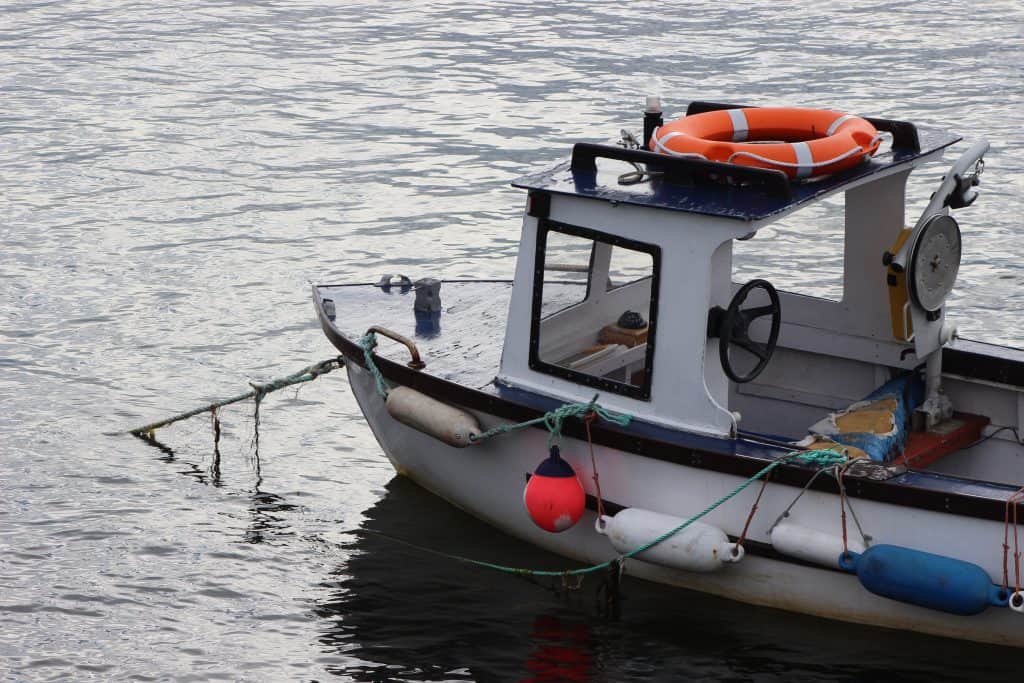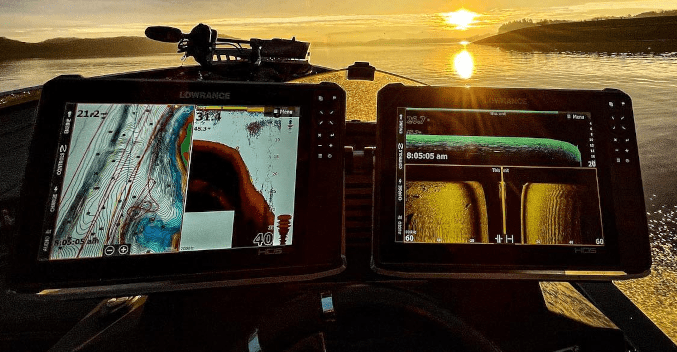
Table of Contents
Technological advancements in the 21st century have led to more and more emergence of new fishing technology. Anglers are always learning new fishing technology they never thought would exist.
To help educate the anglers on new fishing technology, we have compared a fish finder vs. a depth finder.
What is a Fish Finder?

Fish finder refers to equipment using single or multiple sonar beam to assist fishermen locate fish in the water column.
An active transducer is the main fish finder technology element. It is responsible for emitting sound waves.
A transducer helps in underwater objects determining the orientation, distances, and depth of underwater objects. The underwater object image is always displayed on the screen.
The sonar frequency determines fish finder capability. Fish finder frequency ranges from 15 kHz to 200 kHz.
Different fish finders have varying depth ranges. The beams can either be narrow or wide beams depending on the frequencies.
Low frequencies are suitable for deep waters than can go up to 200 feet. High frequencies are perfect for shallow depths not exceeding 200 feet.
High frequency will always capture high-quality images and better data.
This explains why dual-frequency sonar technology performs well in pointing out fish varieties. Some high-end models come with multiple transducers that produce 3D Images of the underneath surface.
Main Features of Fish Finders
Fish finder features depend on the device type you choose. Advanced devices contain more features.
Below are the main features a fish finder contains:
CHIRP Sonar
CHIRP sonar devices are known to be capable of penetrating deep waters. These devices will end varying pulse frequencies, unlike the traditional sonar, which uses a single frequency. This ensures the production of accurate and clear images.
Side Imaging
Images collected from each side of the 18-degree area are added to images before and after to come up with the lake bottom view. Side imaging high frequency reveals cover, structure, and changes in contour.
Integrated GPS
There are GPS fish finders with a high-quality GPS receivers helping anglers identify the best fishing spots.
This ensures the fishermen save time and energy as they will know where to find fish.
Trolling motor follows the contour line from the GPS directing you to the best fishing spot. It also allows its users to store the maps or design their own.
Data created can easily be shared with other fishermen.
Display and picture quality
The transducer is only essential if the information is displayed on a high-quality screen.
The picture should be clear and easily visible. This explains why fish finders have a higher pixel count display screen.
It is easier to read data from units with bigger screen sizes. The display screen has features like multiple color modes and a touchscreen that makes it easier to operate and increases the picture quality.
Power
Like any other energy product, the higher wattage – the better quality. If your fish finder has optimal wattage, sonar waves will be faster, and images will be created quickly. This is true in deep waters. When you want to use a fish finder in shallow water, you will be fine with a fish finder of low wattage.
Frequency
Depending on your fishing location and boat type where you will mount the transducer, you will always factor in different frequencies.
Higher frequency: Transducers with higher frequencies will have a higher wave cycle per second.
Lower frequency: Transducers with lower frequencies are better at identifying larger fish. Low frequency has a higher energy capacity below the water surface.
Dual frequency: A transducer with a crystal component allows vibrations for more than a single frequency.
Price
Imaging fish finders are always available in a wide price range. Professionals prefer using high-quality transom mount devices known to cost more. However, there are affordable, simple, and small fish finders excellent for shore fishing.
When Should You Use a Fish Finder?
Best fish finders provide a wide range of essential data that will help detect fish
presence.
You can kill two birds with one stone since fish finders can measure water depth.
The device you settle for will depend on your needs. In case you are not a professional angler, a medium-range or castable fish finder will be an excellent choice for any fish type.
What is a Depth Finder?
The basic depth finder function is to measure the depth of water. Like the fish finders, the depth finders also use sound waves or sonar. The time between the two events is used to measure the bottom depth.
There are different forms of depth finders. There are basic depth finders that are very compact and easy to use. They are suitable for use in shallow waters and offer a digital readout.
There are high-end depth finders from popular brands like Lowrance and Garmin that have advanced features. These include automatic routing support, real-time mapping, and CHIRP sonar. They come with different modes they can use in other fishing conditions.
All data and lots of other important information are displayed on the screen.
Some top-end models have night vision features. Yes, it is also available in the fish finder. Most of the high-end models do have the same features.
Advanced depth finders are also helpful for merchant and navy ships. They help with the identification of shoal water and rocks.
Main Features of Depth Finders
Powerful Sonar Transducer
A simple depth finder come with an in-built transducer ranging between 200 feet and 300 feet.
The transducers are compelling and capable of delivering instant, accurate readings. The top-end products come with CHIRP, just like the fish finders.
Durable Design
The handheld depth finders are made of sturdy ABS casing waterproof, have a backlit display screen, and are floatable. This makes it possible to use them in deep water. They are powered using alkaline batteries, making them portable.
Easy to use
The handheld depth finder requires no setup and is very easy to use. All you have to do is put the depth finder in water and press the button for depth reading.
The more advanced depth finder are, the more they are suitable for use from the kayak or shore. They must be mounted correctly, and you must interpret loads of data to get the best from them.
Price
The handheld depth finders are inexpensive and can easily be affordable by those with a limited budget.
They cost less when compared to the fish finders. However, the prices increase as you move to the more advanced models.
When Should You Use a Depth Finder?
A depth finder is suitable when you only want to know the water depth. It is an important device if you want to increase your chances of finding fish in water 20 feet to 30 feet deep.
Experienced fishermen can easily interpret depth reading to help them know the nature of the underneath surface and increase locate the fish hotspots.
FAQ
Does a depth finder use sonar?
Yes, it uses sound waves or sonar waves. Depth finder calculates the water depth by taking measurements the wave takes to get reflected from the underwater object and returns to the source.
How deep can a depth finder go?
Depth finder capability will depend on the transducer power. The device’s depth rating ranges from 100 to more than 700 feet.
